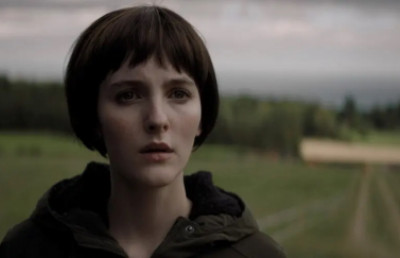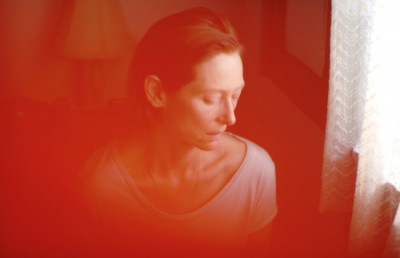The Murder of a Category: The Promise (Terry George, 2016) and Idealism, History, and Armenian Genocide in Turkey
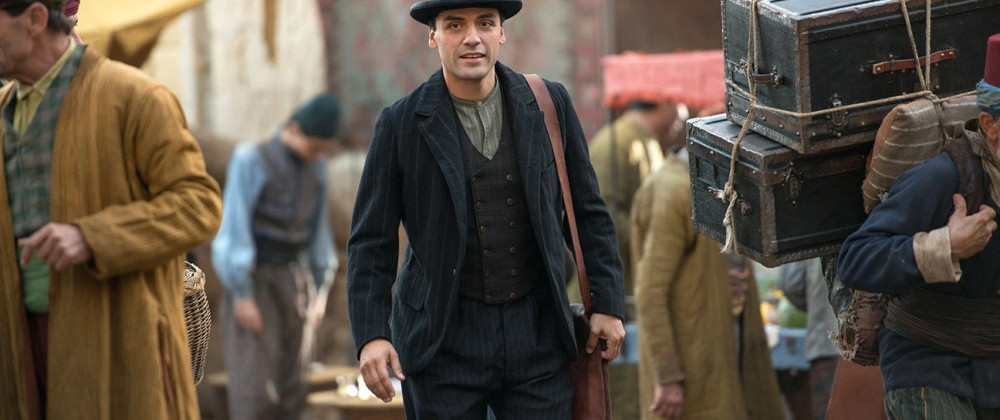
“Be the inferior of no man, or of any men be superior. Remember that every man is a variation of yourself. No man’s guilt is not yours, nor is any man’s innocence a thing apart. Despise evil and ungodliness, but not men of ungodliness or evil. These, understand. Have no shame in being kindly and gentle but if the time comes in the time of your life to kill, kill and have no regret.”
—William Saroyan, The Time of Your Life
“Why should we want to know a stranger when it is easier to estrange another? Why should we want to close the distance when we can close the gate?”
—Toni Morrison, The Origin of Others
Armenia is as much a legend as a country: the name of a phenomenon that no longer exists, though the region—South Caucasia, Northeast Asia Minor (Turkey, Iran)—of its ancient location, with its mountains and valleys and rivers, and its descendants and its culture, are still identifiable. Were the Armenians descendants of the Chaldeans? What, after so much suffering and survival, will they become? There is a republic, west of Turkey and north of Georgia, that bears the name Armenia, and which was part of the Soviet Union, but is that what most people think of when the subject of Armenia and Armenians is spoken? Time does its work, and so does history, and borders change: Mount Ararat, a traditional reference point for Armenians, is outside the current state’s borders. Such thoughts are inspired by The Promise, a fascinating feature film; and partly inspired by contemplation of William Saroyan, a writer of drama and fiction, and philosophy professors Paul and Peter Boghossian, political policy analyst Ian Bremmer, newspaper editor and writer David Ignatius, fashion designer Patricia Field, art dealer Larry Gagosian, film directors Rouben Mamoulian and Atom Egoyan and Alek Keshishian, actors Joe Manganiello and Andy Serkis, entertainer Cher, musicians Aram Khachaturian and Arsen Petrosyan, reality television stars the Kardashians, and erotic film star Colton Ford, people who are all, reportedly, of Armenian descent. The motion picture The Promise, shown at the Toronto International Film Festival in 2016 and in wide release in 2017, is one of those works that seems as if it already should have existed, containing a love story between cultural compatriots, a medical student and an artist and, more importantly, a conflicted history of bad faith, a war tale, and one of the few public testaments we have that are available to a large audience regarding the Armenian genocide in 1915 Turkey.
The Promise, directed by Terry George (the writer of In the Name of the Father, The Boxer, and Hart’s War, and the director of Hotel Rwanda and Reservation Road), begins with an acknowledgement of tradition: whereas other villagers may have been involved with growing rice and grain, corn, tobacco and cotton, or mining silver, iron, or salt, the narrator, the lead character, Mikael or Michael (Oscar Isaac), a young Armenian, tells us that his family members for generations have been apothecaries, herbalists and healers, in his Turkish mountain village, and that he, Michael, is an apothecary too, and wants to study medicine, formally, in the city. Michael’s family of apothecaries have served, and serve, a diversity of people, of differing religions. Michael decides to marry a village girl, Maral (Angela Sarafyan), and to use her dowry of 400 gold coins to pay for his medical school, which course of study usually takes three years to complete but which Michael is confident he can complete in two. The betrothal ceremony for Michael and Maral is festive, with the village families in attendance, and food and wine, music and dancing in colorful finery. After that, in determination and faith, Michael leaves, taking a donkey down the mountain to town, and from the town Michael takes a boat to the city, Constantinople, which we know as Istanbul. The journey of his life has begun.
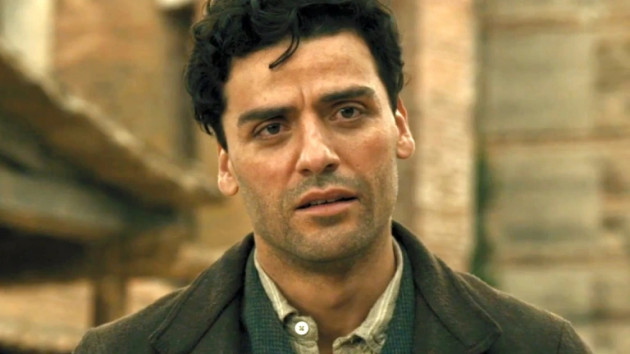
Constantinople is complex and crowded, full of the rich and the poor, of sellers and buyers. It has a competitive atmosphere, and that is expressed, frequently, in ethnic rivalries and dismissive language (casually, people are accused of being thieves or dogs). Michael’s rich merchant uncle, Mesrob (Igal Naor), takes Michael into Mesrob’s family home. Mesrob—who was named, probably, for the fifth century monk who invented the Armenian alphabet—has young daughters, and they have a beautiful modern tutor, an artist and dancer: cosmopolitan, she, Ana (Charlotte Le Bon), studied in Paris and found a companion, Chris (Christian Bale), an American journalist. Ana draws pictures to go with her friend Chris’s published reports, a convenient but genuinely interesting collaboration. Ana and Chris work together, and have shared trouble together—Chris was a help when her father died. Michael, at medical school, meets and befriends a wealthy playboy, Emre, the son of a powerful (and bigoted) father. Emre (Marwan Kenzari) faints while attempting to participate in an autopsy: Emre, fun-loving but sincere, is better at having a good time, though experience and time will prove him to be a very good friend, loyal, brave, sacrificing. Emre takes Michael, Ana, and Chris to a Turkish restaurant, elegant and earthy, where they eat, drink, and dance. Emre and Chris had met before in Paris—and they were friendly, although there were political suspicions about Emre’s father. Emre invites them all to his birthday party at a palatial estate. There, Ana tells Michael that her father was a talented but bankrupt musician and that his debts, which she had not known, led to his suicide. There at the large party attended by sophisticated and beautifully dressed people, the reporter Chris sees the German battleships in the harbor and loudly speculates about the political collaboration of Germany and Turkey (Chris thinks the ships are a bribe for Turkey to side with Germany against Britain); and Ana finds Chris’s behavior boorish and insulting—and Chris promises to drink less, which she has heard before.
What Chris observes of German ships in the Turkish waters is not the first time the region has been used as pawn and prize in a larger contest. Armenia, like Turkey, had known foreign intrigue. In the Araks valley, with the Lake Van plateau, King Aram, an ancient Chaldean king, about 850 years before Christ (B.C.), had called his region Armina, or Armaniya, a name recorded later by the Persian king Darius about 520 B.C.—and the country would be conquered by Persia under its great king Cyrus, all part of the beginning of a tumultuous history with cycles of intervention and independence. Persia and Syria and Rome and the Arabs and the Turks and the Mongols, over succeeding centuries, would make claims on the land but Christianity would claim its people (and the church would act as their official representative). A land that was fought over by competing forces—such as the Persians and Turks—could bewitch and beleaguer its people, inspiring or forcing their exile. The 1863 Turkish constitution allowed for a representative Armenian council, but some Armenians were not happy with Turkish rule and were sympathetic to a Russian invasion, sympathy the Turks punished as treason: Armenians were massacred by the hundreds of thousands. The twentieth-century Armenian genocide in Turkey had antecedents. The Young Turks, who succeeded the rule of sultans in the Ottoman empire in 1908, wanted to reform the entire Ottoman empire in the image and ideas of Turkey, seeing cultural and/or religious minorities as foreign infidels. That seems rather rigid, in light of the fact that the empire—founded in the year 1299—consisted of a wide range of countries and cultures, including Egypt, Greece, and parts of Eastern Europe and the Middle East as well as the Arabian peninsula and North Africa. Yet, the attitude may be comparable to the French idea that all its colonies could be French in sensibility. Of course, homogeneity is difficult to achieve—anywhere. Difference persists, and tensions build. The twentieth-century Armenian genocide in Turkey, lasting from 1915 to 1922, had antecedents, and the killing—ordered, planned, executed, and lied about for decades—would take the lives of 1.5 million Armenians and attempt to destroy what remained of them: memories and monuments.
Who could deny the fact of such horror? Yet, some people have and do deny it, despite eyewitness testimony, then and now. Books on the Armenian genocide include: The Treatment of Armenians in the Ottoman Empire by Viscount Bryce and Arnold J. Toynbee (Hodder & Stoughton,1916), containing reports and other documentation verified by scholars; and Ambassador Morgenthau’s Story by Henry Morgenthau, Sr. (Doubleday, 1918), the American Ambassador to the Ottoman Empire, 1913 to 1916; The Memoirs of Naim Bey: Turkish Official Documents Relating to the Deportation and the Massacres of Armenians by historian Aram Andonian, based on extermination documents signed by Turkish leader Talaat Pasha, collected by the Refugees Office administrator Naim Bey in Aleppo; as well as contemporary works such as The Burning Tigris by Peter Balakian (HarperCollins, 2003) and They Can Live in the Desert but Nowhere Else by Ronald Grigor Suny (Princeton University Press, 2015). Five books, mostly memoirs, of the Armenian genocide have been published and identified as exemplary testimony by expert Thomas de Waal: My Grandmother by Fethiye Cetin, about a grandmother who reveals her childhood adoption during the family-destroying terror; Four Years in the Mountains of Kurdistan by Aram Haigaz, about his childhood spent in a Kurdish family, before reuniting with his own family; Burning Orchards by Gurgen Mahari, an autobiographical novel that satirized aspects of Armenian politics and provocations; and two books about Armenians who moved to America, Song of America by George M. Mardikian, about a restaurant owner’s success, and I Ask You, Ladies and Gentlemen, about survival and emigration, by Leon Surmelian, all five titles recommended to the internet resource Five Books by Thomas de Waal, a writer and a Carnegie Endowment Russia and Eurasia Program senior associate, and the author of Great Catastrophe: Armenians and Turks in the Shadow of Genocide_(Oxford University Press, 2015). Thomas de Waal told _Five Books, “The Armenians are a classic diaspora in that sense as they’re mercantile, adaptable. They have the stereotype of being able to survive anywhere, of practicing various crafts and having business acumen. But the other thing to note here is that every generation is different. This is very much a theme of my book Great Catastrophe, which is about the aftermath of 1915. Every generation deals with this tragedy in a different way. In the 1920s it was through silence, talking about it at home, and survival. In the 1940s the issue hitches itself to second world war politics. In the 1960s it’s different again, it’s about identity politics and the invention of the civil rights movement. It’s a reminder that nothing is static” (accessed online March 2018).
Why such horror? Why the need to adapt? Human cruelty is as terrifying as it is timeless. Of course, most of us feel the inclination to hurt others at one point or another; and it is mystifying that cruelty can be motivated by knowledge or ignorance, wealth or poverty—and sometimes people are destroyed because they get in the way of other people’s ambitions or struggle for survival; and, often, people just hate and hurt each other for their differences, such as those of caste, class, ethnicity, religion, gender, and sexual orientation. Even differences of thought or manner can enrage. How much of that is arrogance, and how much insecurity? Genghis Khan, the twelfth century Mongol leader, was known for his decimation of whole populations—but so were other world leaders, such as Alexander and Napoleon. There are many stories of brutality throughout history, often involving the theft of the property and killing of natives in conquered territories, such as the treatment of the Apache, Cherokee, and Choctaw and other indigenous people in the Americas. The enslavement, exploitation, and lynching of Africans and their descendants, and the discrimination, intimidation, and exile of both Jews and Palestinians, come to mind as well. Genocide—the planned destruction of a people; a term used by the Jewish lawyer and scholar Raphael Lemkin in his 1944 book Axis Rule in Occupied Europe, published by the Carnegie Endowment for International Peace—may have been an old idea but modern techniques gave it a new threat and terror: from the rape and murders in late 1930s Nanking in China by the Japanese, and the killing factories of the Hitler regime in Germany in the 1940s, to more recent atrocities in Burundi, Cambodia, and Bosnia-Herzegovina and Rwanda. Yet, although the Armenian genocide may have been one of the first in the twentieth century, it is not likely that its lessons will become irrelevant—think of the Rohingya people of Rakhine State in Myanmar, whose burned villages and desperate escapes now make the weekly if not daily news reports: the Rohingya, many of whom are Muslim, some of whom are Hindu, have ancient roots in the area but are denied civil rights and are persecuted in Buddhist Myanmar. The Yazidis, an ancient religious sect that believe in reigning angels, are suffering similarly in Iraq, persecuted by Muslim extremists. Genocide, once a threat, a rumor, a legend, is now the subject of academic study, with programs devoted to it at American schools such as Boston University, Clark University, Kean University, Syracuse University, and the University of Illinois, as well as colleges around the world, including Kingston University in London, Trinity College in Ireland, the University of Amsterdam in the Netherlands, the University of Sydney in Australia, and Uppsala University in Sweden. One can counsel tolerance and understanding, even acceptance, appreciation, and affection—but each person chooses his own counsel and allegiances.
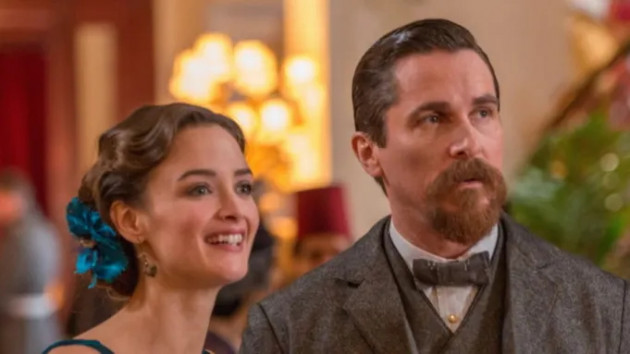
Why are we as we are? People are born in one place, and grow into habits and rituals for food, housing, sanitation, knowledge, pleasure, and relationships, and people bequeath those habits and rituals to their children, ways of being and doing, of meaning, an inheritance of culture, that come to define them, although those habits and rituals may be accidents of birth and place and mere incidental naming; and usually people see those with different habits and rituals as very different people—interesting or inspiring or disgusting or frightening. Our categories are forms of identity and order. Emotion—like love or hate—is usually consequence, effect, residue of experience and supposed enlightenment; and accumulation of emotion occurs frequently because of attachment or alienation, laxity or pressure, repression or indulgence. Emotion alone is often confining, limiting perspective and possibilities—whereas imagination, intellect, and spirit can be much more liberating. Human experience and consciousness can be ambiguous and complex and divergent: despite your intuitions and instincts, you do not know what I think or feel unless I tell you; in fact, you may not know, still, even after I tell you. You cannot be sure of what is occurring in my brain. It is easier to look at appearances and decide that I fit into one category or another. Our categories reassure us. We can take them so much to heart that we kill to preserve or repudiate them. A recent article, “Beastly,” by Paul Bloom in The New Yorker considered several books by writers such as Alan Fiske, Kate Manne, and Andrea Pitzer on brutality, and argued that rather than thinking those we dislike are less than human, we recognize their humanity but insist on the power to treat them with disrespect, to punish, to deform; and Bloom said, “The sadism of treating human beings like vermin lies precisely in the recognition that they are not” (November 27, 2017).
In presenting a history most of us know little about, Terry George’s The Promise is doing important work: produced by Survival Pictures (Kirk Kerkorian and Eric Esrailian), and written by its director Terry George with Robin Swicord, and photographed by Javier Aguirresarobe, and edited by Steven Rosenblum, with production design by Benjamin Fernandez, the motion picture makes more than a few complexities clear, though one sometimes wants a little more fact—but this is not a documentary. The film’s dialogues are informed and intelligent and allow for recognition of facts but its pacing is quick and does not permit as much reflection as one might like (the director did not think the leisurely pace of a Doctor Zhivago would be tolerable to today’s audiences); but it is an engaging, even moving, film. In The Promise, with the increasing hostilities of the world war, and Turkey entering the war on the side of Germany, Turkish men are required to register for military service: and Emre (Marwan Kenzari) gets a medical exemption, and Emre helps his friend Michael (Oscar Isaac), or Mikael, get one too, using Emre’s well-established Turkish family name, something Emre’s father will object to him doing. The rich and powerful do not grant important favors to those who cannot repay them—and, apparently, especially not to Armenians—who were seen with suspicion, and were expected by some people to be partial in a significant political conflict to a Christian nation such as Russia, an old enemy of the Ottomans, rather than be loyal to a Muslim nation such as Turkey; a suspicion with some basis in reality, as Armenia was a nation no longer marked by territorial borders but by history and culture (there were Armenians who fought with the Russians against the Turks in the Caucasus during the great war). The American journalist Chris (Christian Bale), preparing to go on a reporting trip, warns his companion, the artist Ana (Charlotte Le Bon), about the coming danger for Armenians but Ana does not want to leave Turkey. Ana invites Michael to church to hear a famous Armenian praise-singer, someone with whom her father had performed, an affirmation of Armenian culture. The Armenian Christian heritage that bind Ana and Michael separate them from the dominant Muslim citizens in the eyes of some (traditionally, Christians and other minorities were charged higher taxes and had fewer civil rights in Turkey). Michael’s Uncle Mesrob (Igal Naor) sees the intimacy, the rapport, between Michael and Ana, and Mesrob encourages the relationship, saying that the uncle would reimburse the dowry to Michael’s fiancée Maral, so that Michael might make a more inspired romantic choice and be happier than the uncle was in his own arranged marriage, but Michael wants to be true to his word, his promise.
The film’s complexity—its history and its romance—can be seen to contain contradictions. History is fact—knowledge and proof, even as history recognizes the struggles within and between people and the difficulties beyond resolution. Romance is mystery, desire, hope, possibility, and virtue, a belief in fulfillment. However it is arguable that a portrait of life that lacks romance or history would be either too simple or too much harsh reality: even today, as wars continue and diseases spread and earthquakes and tornadoes do damage, people have friendships and fall in love. In The Promise, while Michael and Ana are beginning to fall in love, enjoying culture and conversation, the American journalist Chris sees the devastation of the beginning genocide: the burning village, the lynched men, the women shot on the road. The genocide—beginning April 24, 1915—would encompass the destruction of villages and homes, of lives and ways of living, with killing squads manned by criminals as well as soldiers using myriad ways to murder, including burning and crucifixion. Michael and Ana help each other during a riot in which Armenian businesses are vandalized and Armenians attacked in the street, the two taking refuge in a hotel for the night. The Promise has history and romance, drama and humor, and offers an ideal but complex experience of love and trouble—its principal characters earn each other’s respect and love and help each other. The intimacy—rather than the grandness—of the romance in the film is the power of its appeal and persuasion. The characters are recognizably human while being quite decent. Chris, the foreigner, is passionate about what he sees of trouble in another country: Chris gives a truthful account in his work, hoping it will mean something to the world, specifically to America and Europe, which might be able to make a moral and political claim on Turkey, protecting the Armenians from further harm; and yet his efforts endanger him. The murder of Armenian leaders, including intellectuals or merchants, as well as of ordinary people, is evidence of great malice—and murderers do not relish hostile witnesses. The murder of intellectuals was the conscientious attempt to destroy the heritage and wisdom of a people. Chris, Ana, and Michael have seen the beginning of the genocide. Chris is upset when Ana returns with Michael, but Chris is still willing to help Ana and other Armenians—his private desires do not eliminate social virtue.
The history and romance of Terry George’s The Promise was appreciated by more paying filmgoers than by critics, who had trouble transcending perception of categories. In a review of dismissive disappointment, the New York Times’s reviewer Jeannette Catsoulis said, “Aspiring to the sweep of epics like Doctor Zhivago and Reds, Mr. George achieves neither the romantic delirium of the first nor the sheer swaggering gumption of the second” (April 20, 2017). Of course, anyone who wants to see those two films can do so: this is a different film, whatever its aesthetic inspirations. Catsoulis hardly managed to register the film’s significant historical subject, although Danny Leigh and Aine O’Connor did. “Strings sweep and the landscape sings early in The Promise, an old-fashioned epic that unfolds to reveal the obscenity of the 1915 Armenian genocide,” wrote Danny Leigh in The Financial Times (April 27, 2017), recognizing both the film’s melodrama and its truthful power, how “The film catches the dreadful speed with which smashed windows give way to death camps, while individual scenes have a grim power.” Would a sense of the prevalence of suffering give some viewers more insight into the film’s subject? “The Promise is a passion project funded by US Armenians to describe the never officially acknowledged genocide committed against them by the Ottoman empire. Terry George, who wrote In the Name of the Father and Hotel Rwanda, was an excellent choice for the project. Those two films, however, were based on real people during real events whereas The Promise is about fictional people in real events which is always a difficult balance,” wrote reviewer Aine O’Connor in The Independent (May 1, 2017), which covers news of interest in Ireland, a land known for the volatility of its contentions and the resilience of its culture; and O’Connor concluded, “The love saga does take over at times, however the film does raise awareness of the 1.5m people whose murders have never been recognized by Turkey.”
In The Promise, Michael’s Uncle Mesrob is arrested, and the family home attacked. Michael seeks his medical school friend Emre’s help, and, to Emre, Michael gives his dowry or be used to ransom Michael’s uncle but, although a guard takes the money, the uncle is not freed. The oppression has gone beyond the reach of bribery. Emre’s father forces Emre to join the army as corrective and punishment for Emre’s behavior, his interference; and Michael is sent to do hard labor on the railways, events that suggest how formidable and indifferent to solitary lives power can be: family and friends become suspect, if not enemies, when they move beyond the principles and preferences of a greater authority. Of course there were Turks, such as Emre, who tried to help the fearful and fleeing Armenians—the kind of aid researched and documented by the International Raoul Wallenberg Foundation, in a report by Burçin Gerçek, supervised by scholar Taner Akcam of Clark University. However, there were not enough of those brave people, and thus more than a million Armenians were killed in Turkey, with only about 388,000 Armenians remaining in 1922.
The Ottoman empire’s reigning sultan had massacred the Armenians in the nineteenth century; and the Ottoman empire’s Young Turks massacred them in the early twentieth century—and the nationalists who came to power after the fall of the Young Turks, forming a republic in Turkey with the end of the Ottoman empire, refused to accept responsibility for those massacres: the 1920 Treaty of Sevres between the Allies and the Ottoman empire compelled the empire to relinquish conquered lands, and to take responsibility for its treatment of the Armenians, and included a provision for an Armenian state in Anatolia, but the subsequent 1923 Treaty of Lausanne with the republic of Turkey allowed for the repression of minorities, illustrating how history can be a recurring nightmare: Turkey would go on to treat its Armenians, Kurds, Greeks, and Jews with negative discrimination in its social policies. The Turkish government continues, until today, to deny its official plan and practice to eliminate an entire people from its existence, denying the Armenian genocide—even going so far as to protest the making of The Promise and giving support to a film with an opposing viewpoint, one positioning a Turkish soldier as hero, The Ottoman Lieutenant (2017).
In The Promise, the railway laborers, forced laborers, of whom Michael (Isaac) is now one, are brutally treated, beaten and starved and shot. One wounded and outraged worker’s rebellion frees Michael, who tries to help others and finds himself back in his home village. “All the young men are gone,” says Michael’s father. “Our business is gone.” Michael’s fiancée Maral (Angela Sarafyan) and her father visit, with a plan to save Michael and continue their lives: Michael and Maral will marry and live in a cottage up in the woods. Yet Michael admits to his mother that he, Michael, fell in love with someone else in the city but his mother (Shohreh Aghdashloo) compels him to marry Maral and he does—and when Ana and Chris arrive to find out Michael’s fate, with Uncle Mesrob’s wife Lena, his fearful, distrusting mother tells them that Michael is dead. Maral has a difficult pregnancy, and Michael returns her to the village and his mother for care, while Michael seeks a collective solution for their plight (Lena is surprised to see him and hopes her own husband will survive too). Michael learns that his mother told Ana and Chris of his death, and, aware of plans to save orphans by boat, he thinks something similar might be done for his family, and Michael leaves Maral to find an escape for the family. Michael enters the compound where Ana and Chris are, and Michael and Ana hug, observed, distantly, by Chris, and Michael speaks of his marriage and need of help; and Ana is shaken but agrees, with Chris, to help Michael to safety and out of her life. The three, Michael, Ana, and Chris, leave with the orphans, hoping to take them to safety, but as they near Michael’s village, Michael and Chris see the massacre of the village’s people, including Michael’s father and Michael’s pregnant wife, a solemn scene of quiet horror and terror.
Chris’s reports on the enveloping horror, on the destruction of human rights and realities, get him arrested; and Emre tries to intercede, a risk for both their lives. The Turks deny their genocidal intentions despite the evidence, as they would for decades to come. The Armenians, artists and bankers and merchants and ordinary workers, men, women, and children, are not mere victims: they fight—and their coastal mountaintop fight has become a thing of legend, remembered as brave, imaginative, shrewd, and effective: the battle of Musa Dagh. The Armenians are helped by the French navy and an American Jewish ambassador. Yet, their own spirit is what sustains them. The Promise is an important and touching story: a romance rooted in terrible history—the romance allows us to tolerate the telling of such an appalling, painful, and haunting history.
This article was submitted on March 2018


